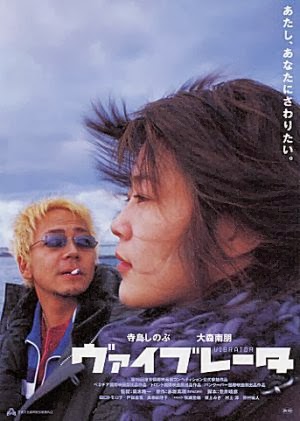(2011) Directed by Goro Miyazaki; Written by Hayao Miyazaki
and Keiko Niwa; Based on a manga by: Chizuru Takahashi and Tetsurô Sayama;
Starring: Masami Nagasawa, Jun'ichi Okada and Keiko Takeshita; Available on DVD
and Blu-ray
Rating: ****
"You have the terrible period of World War II, and that
was followed by chaos. The period we're talking about here is right before
economic growth, and that was the brief moment in Japan when people were able
to enjoy a relative time of peace and calmness." – Goro Miyazaki (excerpt
from Los Angeles Times article, Goro
Miyazaki Sets His Own Path in Animation, By Rebecca Keegan)
With the great Hayao Miyazaki announcing his retirement last
year for perhaps the last time, what does the future of Studio Ghibli look
like? If I had to base my judgment solely
on his son Goro’s previous effort, the ambitious but joyless Tales from Earthsea (yes, I realize I
gave it three stars, but mostly for the animation and the attempt.),
I would say Ghibli’s prospects weren’t too rosy. The younger Miyazaki more than redeemed
himself, however, with his nostalgic sophomore effort, From Up on Poppy Hill (aka: Kokuriko-Zaka
Kara). The focus is on drama instead
of fantasy, taken at a slower pace (think Whisper of the Heart),
where characterization prevails over action.
The story (written in part by Hayao Miyazaki) follows two
high school students, Umi Matsuzaki (Masami Nagasawa) and Shun Kazama (Jun'ichi
Okada) as they work together to save their fellow students’ clubhouse, the
friendship that develops between them in the process. It’s set amidst the
backdrop of 1963-era Japan, when the country was still reeling from the
devastation of World War II, and preparing for the 1964 Tokyo Olympics. One of the recurring themes throughout the
film is the concept of “out with the old, and in with the new.” There’s a sense of cautious optimism, as Japan
is teetering on the edge of a cultural and economic transformation. Goro shares his father’s meticulous attention
to detail with richly animated sequences, which make this portrait of a society
in transition spring to life.
Umi is the embodiment of resilience and selflessness in the
face of uncertainty. Her mother, who works
as an MD, is traveling in America. She
lives in her grandmother’s seaside house with two siblings and several boarders. Every morning, she carries on the ritual of
raising signal flags; a symbolic gesture honoring her father, whose ship was
lost at sea when she was a little girl. She finds a distraction from her household
chores when she becomes involved with an effort by some fellow students to save
their school’s beloved clubhouse from demolition. Although she has a shaky beginning with Shun,
one of the organizers, they gradually develop a friendship that evolves into
something more. As Umi and Shun explore their past, they discover a link
between their families that threatens to tear their budding romance apart.
The third main character of the film is the clubhouse,
providing many of the film’s lighter moments. Dusty, splintered and ramshackle,
the clubhouse represents old Japan, which most of the students, and
paradoxically the older generation, are eager to distance themselves from. It’s a piece of history, which many are in a
hurry to erase, in favor of a new building. It’s no coincidence that the clubhouse’s most
ardent supporters are a dedicated bunch of high school students who were born
after World War II. They represent a
reluctance to sublimate the past and let it fade away, a drive to restore balance
and harmony by allowing it to co-exist with the present.
Goro Miyazaki spins his tale with warmth and earnestness. He’s not afraid to slow things down in
service of the story – rewarding subsequent viewings with wonderful visual
details and character nuances. After
stumbling with Tales from Earthsea,
he found his voice with From Up on Poppy
Hill, indicating his relative strengths lie in the little dramas, not epic
adventures. We shouldn’t grieve for the
elder Miyazaki and his works, but welcome Goro as another worthy director in
the acclaimed Studio Ghibli stable. The
future of Ghibli is in good hands.

























